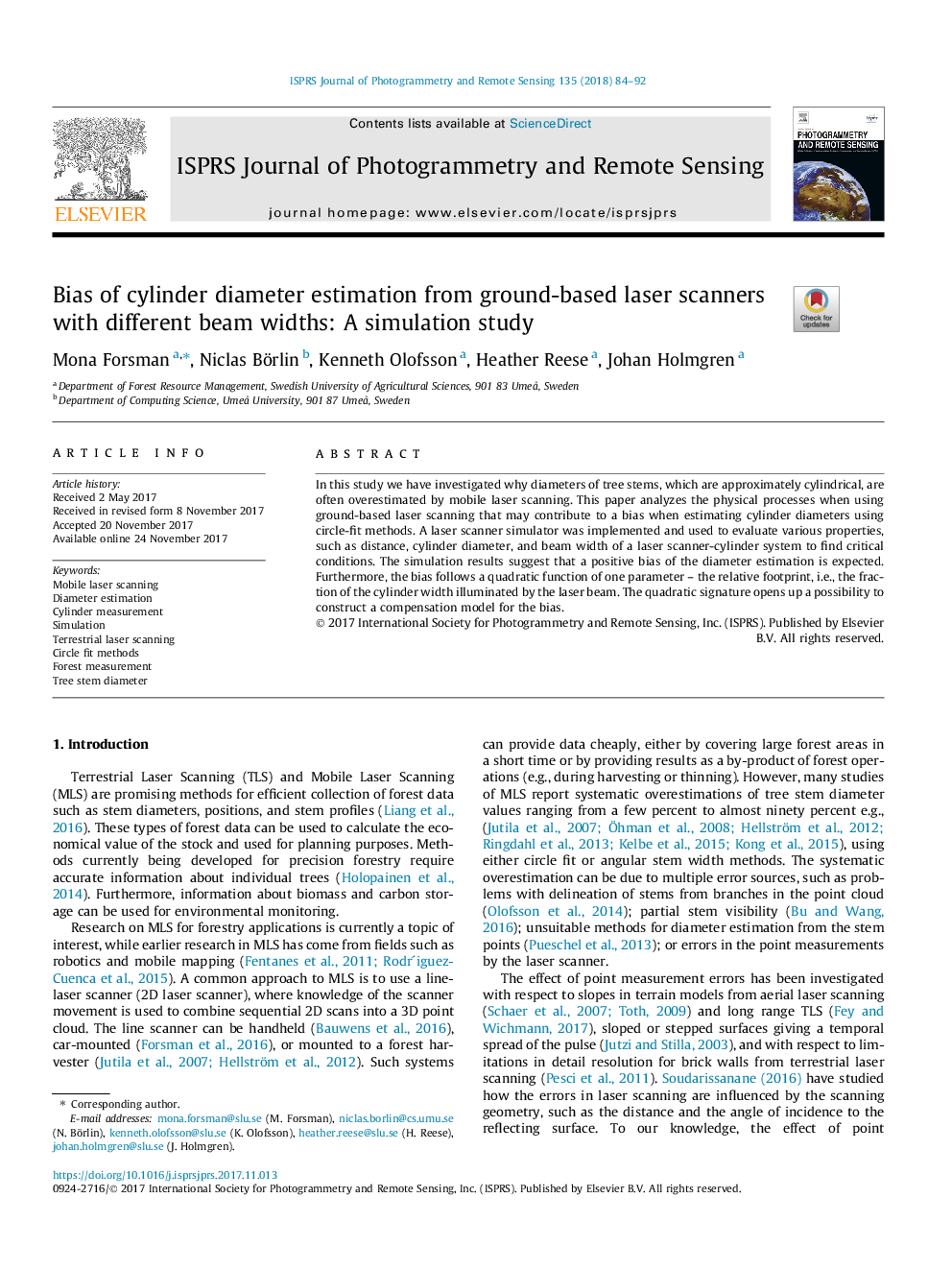| کد مقاله | کد نشریه | سال انتشار | مقاله انگلیسی | نسخه تمام متن |
|---|---|---|---|---|
| 6949252 | 1451239 | 2018 | 9 صفحه PDF | دانلود رایگان |
عنوان انگلیسی مقاله ISI
Bias of cylinder diameter estimation from ground-based laser scanners with different beam widths: A simulation study
ترجمه فارسی عنوان
برآورد قطر سیلندر از اسکنرهای لیزری زمینی با عرض پرتوهای مختلف: یک مطالعه شبیه سازی
دانلود مقاله + سفارش ترجمه
دانلود مقاله ISI انگلیسی
رایگان برای ایرانیان
کلمات کلیدی
اسکن لیزر موبایل برآورد قطر، اندازه گیری سیلندر، شبیه سازی، اسکن لیزر زمینی، روش مناسب دایره، اندازه گیری جنگل، قطر ساقه درخت،
ترجمه چکیده
در این مطالعه ما بررسی شده است که چرا قطر ساقه درخت که تقریبا استوانه ای است، اغلب با استفاده از اسکن لیزر موبایل قابل مقایسه است. در این مقاله فرآیندهای فیزیکی در هنگام استفاده از اسکن لیزری زمینی مورد بررسی قرار می گیرد که در هنگام برآورد قطر سیلندر با استفاده از روش های دایره ای، می تواند منفی باشد. شبیه ساز اسکنر لیزر برای ارزیابی خواص مختلف مانند فاصله، قطر سیلندر و عرض پرتو یک سیستم لیزر اسکنر-سیلندر برای ارزیابی شرایط بحرانی مورد استفاده قرار گرفت. نتایج شبیه سازی نشان می دهد که پیش بینی تخمین قطعی قطعی مثبت است. علاوه بر این، تعصب یک عملکرد درجه دوم یک پارامتر را دنبال می کند - راندمان نسبی، یعنی کسر عرض سیلندری که توسط پرتو لیزر روشن می شود. امضای درجه دوم امکان ایجاد مدل جبران برای تعصب را فراهم می کند.
موضوعات مرتبط
مهندسی و علوم پایه
مهندسی کامپیوتر
سیستم های اطلاعاتی
چکیده انگلیسی
In this study we have investigated why diameters of tree stems, which are approximately cylindrical, are often overestimated by mobile laser scanning. This paper analyzes the physical processes when using ground-based laser scanning that may contribute to a bias when estimating cylinder diameters using circle-fit methods. A laser scanner simulator was implemented and used to evaluate various properties, such as distance, cylinder diameter, and beam width of a laser scanner-cylinder system to find critical conditions. The simulation results suggest that a positive bias of the diameter estimation is expected. Furthermore, the bias follows a quadratic function of one parameter - the relative footprint, i.e., the fraction of the cylinder width illuminated by the laser beam. The quadratic signature opens up a possibility to construct a compensation model for the bias.
ناشر
Database: Elsevier - ScienceDirect (ساینس دایرکت)
Journal: ISPRS Journal of Photogrammetry and Remote Sensing - Volume 135, January 2018, Pages 84-92
Journal: ISPRS Journal of Photogrammetry and Remote Sensing - Volume 135, January 2018, Pages 84-92
نویسندگان
Mona Forsman, Niclas Börlin, Kenneth Olofsson, Heather Reese, Johan Holmgren,
